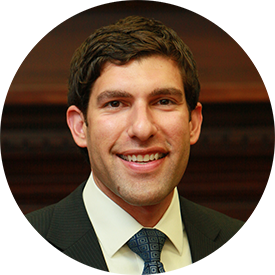Personal Wealth Management / Book Reviews
Attack of the Quants!
Books about "quants” are popping up everywhere, but Emmanuel Derman's My Life as a Quant is best for neophytes.
Hedge funds are blamed for a lot of stuff these days. Open the paper and you'll find regulatory head honchos across the globe recommending a ban on CDS (credit default swaps) and the like. Hedge funds and their black magic math are getting blamed for everything from the panic of 2008 to today's Greek debt woes.
The speed of capital markets' development in recent decades inherently makes folks nervous—new and highly sophisticated products are based on complicated mathematics that aren't intuitive (let alone comprehensible) to the lay investor. So it's natural investors want to know who these folks are and what they're up to, and it's also natural to fear them. We tend to fear what we can't understand, and populist media will happily stoke the fire. The more sensationalistic of contemporary quant books want to equate the strategies of all hedge funds (and the ubiquitously nerdy, greedy quants who run them) to a wanton, drunken night of Vegas gambling. Instead of making that point convincingly, these books are instead unwitting caricatures of how average folks tend to misunderstand this part of capital markets.
But Emmanuel Derman—one of the original quants—is not someone to fear, or distrust. His fantastically wrought My Life as a Quant: Reflections on Physics and Finance is a must read for any non-professional wishing to learn more about what quants are and how they do their job. Mr. Derman tells his tale in the form of a memoir: He starts as an ambitious theoretical physicist, but ends up on Wall Street in the mid-eighties, pioneering mathematical and computer programming breakthroughs—innovations that have since revolutionized capital markets.
The tale is told with tremendous deftness and aplomb—the tribulations of Mr. Derman's life are presented with restraint yet are touching and universal. Through his narrative he weaves explanations of math and physics—of the most technical and flat-out-boring sort—in so simple and readable terms that a person with no background in such matters will come away both more learned and entertained. I'm willing to bet even the neophyte will grasp the Nobel Prize-winning Black-Scholes model and the problem of the "volatility smile" in pricing stock options. Really!
Here you will read about the origins and development of the quants on Wall Street, why those with highly theoretical backgrounds in physics and mathematics prevailed through this era, and what exactly they were up to, sans overt drama, politicization, or sensationalism. Readers will also come to appreciate that, along with math, this is the era where computer programming transformed all of finance.
In his heart of hearts, Mr. Derman is an academic, and he spends time talking about the personal and professional conflicts in making the transition to Wall Street. There is great humor here (they work 50 hours a week, lunches are always catered, and all that matters is the bottom line!), but it also makes for great perspective. Perhaps because of his experience in both worlds, Mr. Derman transitions between the aesthetics and beauty of theoretical math to the forced pragmatism of the market's irreducibility lightly and easily.
The final chapter is a tour de force in the problems of dealing with models/theories versus reality. For anyone who believes in the primacy of mathematics as a mechanism for "figuring out" markets, Mr. Derman will put those notions to rest convincingly. Math is a description of reality, not reality itself, and therefore no model will ever describe how markets work in an ironclad way. Instead, what happens in real life (what the academy calls "phenomenology") must drive finance—because it's ultimately as much a social science as a natural one. At least for today, the human element cannot be so easily reduced to an equation. (For the truly brave and adventurous willing to sink their teeth into modern philosophical debates about math, I recommend Where Mathematics Comes From: How the Embodied Mind Brings Mathematics into Being by George Lakoff and Rafael Nuñez, or Is God a Mathematician? by Mario Livio. But don't say I didn't warn you—it's heady stuff!)
But whatever you do, don't let contemporary rancor blind you to the importance, beauty, and complexity of today's capital markets and their instruments—they are a wonder to behold, and ultimately a boon…even if sometimes they bust.
__________________________________________________
Michael Hanson is an analyst at Fisher Investments, author of 20/20 Money, and a blogger at InvestingIQ.
If you would like to contact the editors responsible for this article, please message MarketMinder directly.
*The content contained in this article represents only the opinions and viewpoints of the Fisher Investments editorial staff.
Get a weekly roundup of our market insights
Sign up for our weekly e-mail newsletter.

You Imagine Your Future. We Help You Get There.
Are you ready to start your journey to a better financial future?

Where Might the Market Go Next?
Confidently tackle the market’s ups and downs with independent research and analysis that tells you where we think stocks are headed—and why.





